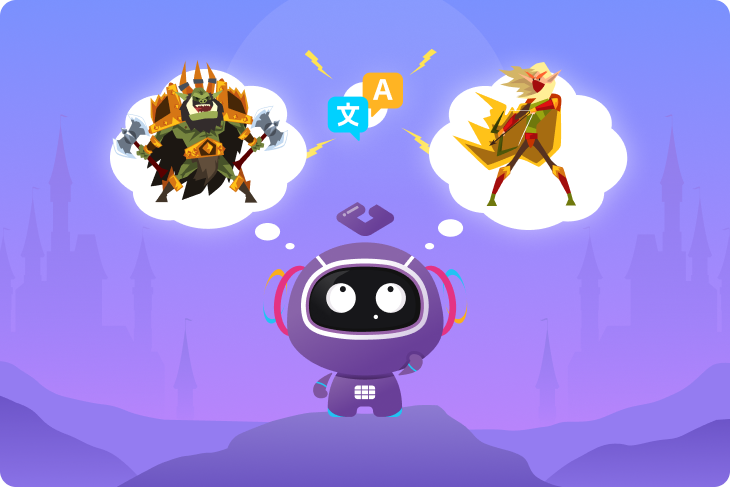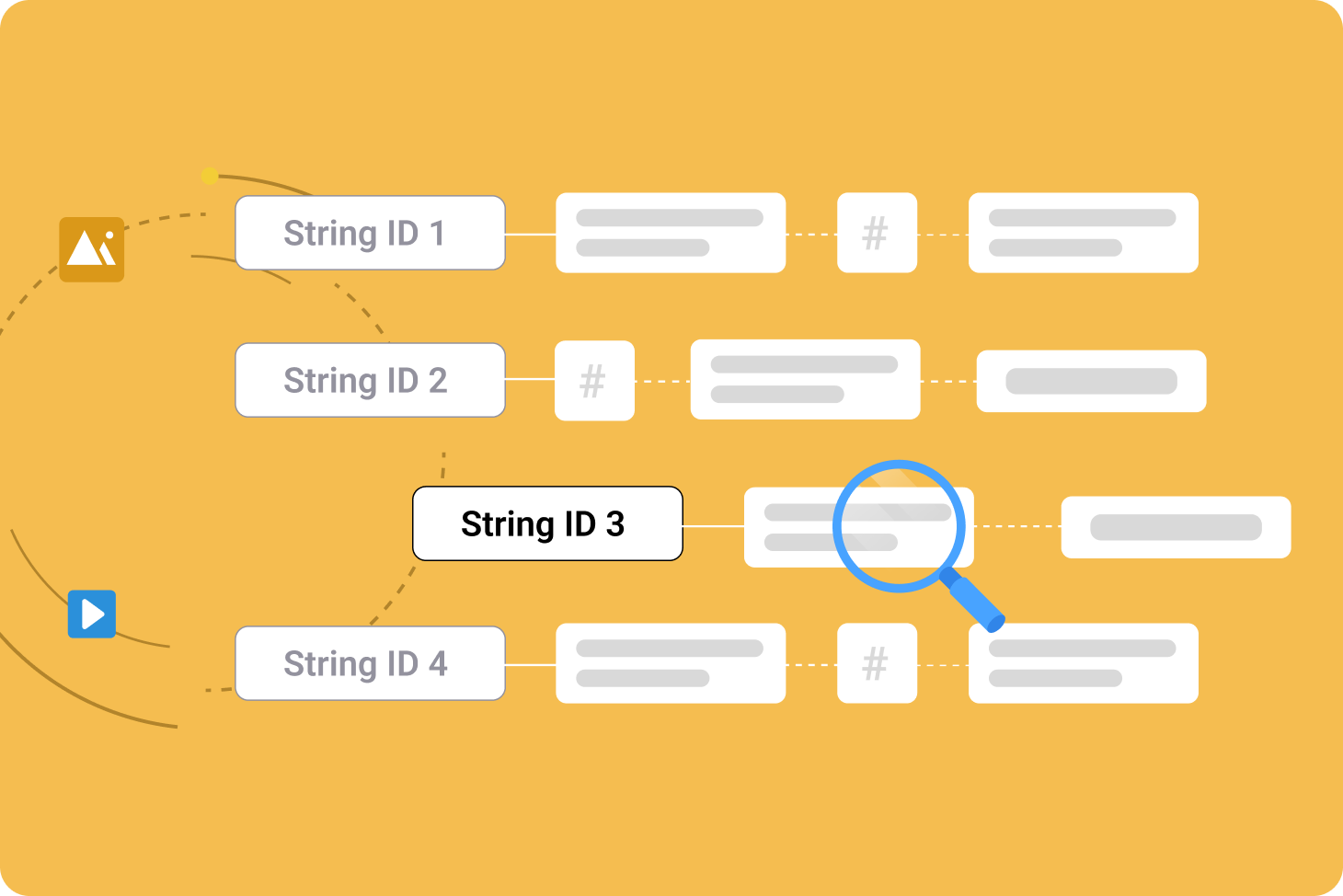Great: World of Warcraft
By any metric, World of Warcraft (WoW) is one of the most successful and longest-running video games of all time. The sprawling fantasy MMORPG (massively multiplayer online role-playing game) took the genre throne after early successes such as Ultima Online, RuneScape and EverQuest and is still the world’s most popular MMORPG today.
As an international game, WoW relies heavily on localization to provide an engrossing experience for all players, while also satisfying varying legal and regulatory requirements. Publisher Blizzard extensively localizes every facet of the game, from character and location names to payment options, dialects and accents, and even pop culture references. This makes World of Warcraft an excellent example for game localization that demonstrates best practices across multiple aspects of the localization process.
Use of real-world regional dialects
When localizing WoW into Italian, the team identified commonalities between Neapolitan culture and the game’s Troll race — and so the Trolls speak a Neapolitan dialect in the Italian version of WoW. Meanwhile, the Kul Tiran humans are hardier and more muscular than the other humans in the game’s world. To represent this difference, the German localization team gave the Kul Tirans a north German dialect.
Clever translations
Fantasy games are rife with unique words that carry special in-universe significance. The Jinyu in World of Warcraft are a fishlike race with a connection to water, which is why they’re also known as Waterspeakers. Rather than translate this literally, the French team dubbed them Euracles — a portmanteau of eau, the French word for water, and oracle.
Visual adjustments
Due to cultural considerations, Blizzard’s localization partner in China urged the publisher to remove the bones that protruded from the skin of the Forsaken, a playable race of sentient undead. In China, the Forsaken instead appear as smooth-skinned zombies. This ended up being a smart choice — China has since gone on to ban blood and gore in video games entirely.
Not so great: Genshin Impact
Genshin Impact is an action RPG, where the player traverses a world completing quests, meeting non-player characters (NPCs), and defeating foes. Like World of Warcraft, Genshin Impact has a massive global following. But unlike WoW, it isn’t as widely praised for its localization.
Genshin Impact is a “gacha” game, in which players spend in-game or real currency to receive randomized rewards including new characters or items. To keep players engaged and spending, publisher miHoYo routinely adds new content under the GaaS (games as a service) model. All that content needs to be localized — but according to some, miYoHo doesn’t always get it right. This serves as a cautionary game localization example that highlights common pitfalls in the industry.
Personality changes
In Genshin Impact, the player is accompanied by Paimon as their companion throughout the game. English-speaking players have accused Paimon of coming across as rude or insensitive, but people playing in other languages don’t always see her the same way — marking a distinct shift in Paimon’s character in the English version of the game.
In one notable example, Paimon criticizes the contents of a box as “junk.” But in a detailed breakdown of the script, one Twitter user revealed that this wasn’t the intent of the original Chinese. In Chinese, Paimon comments on the random nature of the box’s contents, with no negative judgment passed.
Since Paimon is essentially the face of Genshin Impact, it’s critical that she is well-received. But this isn’t always the case amongst the game’s English-speaking player base. And the issue isn’t limited to just Paimon, as she isn’t the only character who has been described as less likable in English than in Chinese. This game localization example demonstrates how character consistency issues can significantly impact player experience.
What went wrong?
Consistency issues like this can arise when localization teams are siloed — when each language is handled by a separate team with little to no communication between them. It’s possible that greater communication and collaboration between the Chinese and English teams could have helped the latter more accurately depict the game’s characters as originally written.
These types of character inconsistencies often stem from fragmented workflows and lack of centralized oversight. Implementing a comprehensive game localization procedure that includes clear character guidelines, tone documentation, and cross-team collaboration protocols can help prevent such discrepancies from occurring across different language versions.
Cultural insensitivities
Good localized content should both respect its source material while also appealing to the cultural expectations of its target. Some players feel that Genshin Impact doesn’t always get this right.
The game’s English-language voice actors routinely appear to mispronounce non-English names. In one interview, two voice actors discussed having been instructed to pronounce some character names incorrectly on purpose. According to the interview, the game’s US localization director had the actors “simplify” potentially challenging names to make those characters more accessible to English speakers.
Meanwhile, the game’s Sumeru content pack was criticized for failing to include characters with darker skin tones despite the diverse spectrum of complexions found in the Middle East, from which Sumeru openly draws its inspiration. However, Genshin Impact earned praise for avoiding negative stereotypes by depicting Sumeru as a “city of scholars” with an advanced level of technological development.
What went wrong?
Sometimes, the decision to alter the way a cultural influence is depicted is a conscious choice. But these decisions shouldn’t be taken lightly. Any time creators wish to draw inspiration from another culture, sensitivity readers and cultural consultants must be included throughout the content creation and quality assurance processes.
>> Learn more about localization quality assurance (LQA)
Avoid localization mishaps with an airtight pipeline
Not all localization flaws are the result of mistakes. Sometimes, leadership may decide that marketing concerns outweigh cultural sensitivity considerations. In other cases, siloed localization teams working without sufficient testing may create content that diverges significantly from the source material.
The best way to ensure consistency is with a content management platform that empowers you to bring your entire localization team under one organizational umbrella. For studios managing complex, multi-language releases like these AAA titles, adopting a centralized game localization tool becomes essential for maintaining character consistency, cultural sensitivity, and quality across all markets while streamlining collaboration between distributed teams.
Gridly forms the centerpiece of the content management and localization ecosystem, connecting to all your other tools and platforms for seamless content access and sharing.
Ensure smooth collaboration while avoiding unwanted errors with granular access controls. Stay on top of content flows with automated status tracking and verify content with built-in support for a wide range of LQA models. Get all this and more in Gridly’s intuitive spreadsheet interface and level up your localization results today.
Ready to become the next excellent game localization example? Sign up for Gridly’s 14-day free trial or schedule a quick demo to see everything in action.










